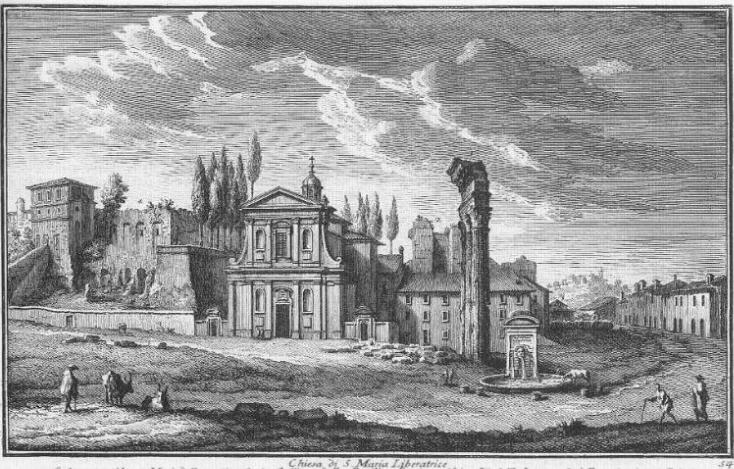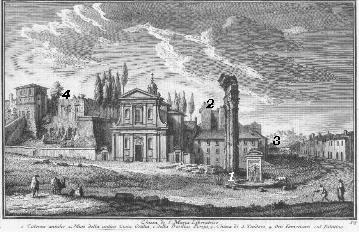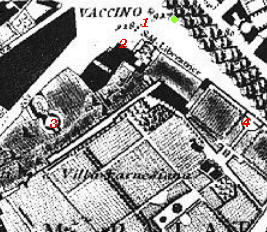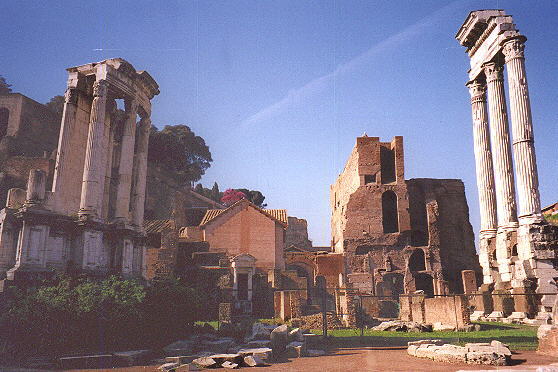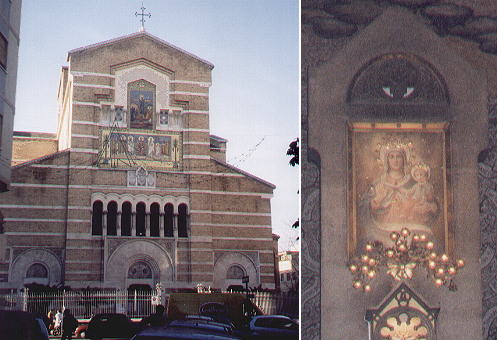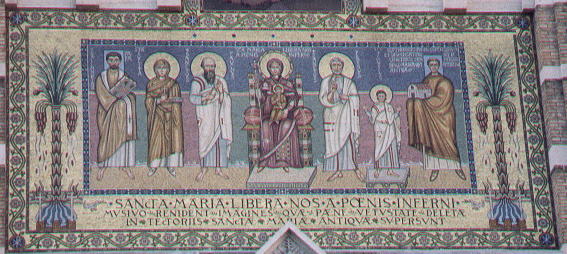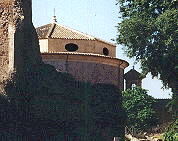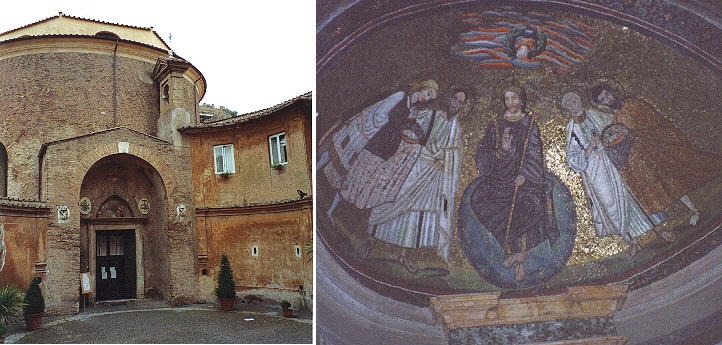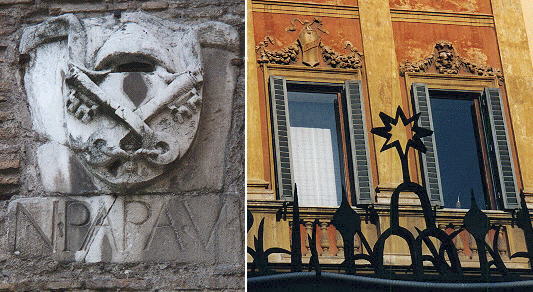  S. Maria Liberatrice (Book 3) (Map B3) (Day 1) and (Day 5) (View C9) (Rione Campitelli) In this page:
S. Maria Liberatrice was built at the beginning of the XVIIIth at
the foot of the Palatinus in the middle of the Forum
over the ruins of a very old church S. Maria Antiqua, which had been until
the IXth century one of the most important churches of Rome. The view is taken from the green dot in the small 1748 map here below.
In the description below the plate Vasi made reference to: 1) Temple
of Castor and Pollux (in the XVIIIth century the columns were thought to belong to the Temple of Giove Statore);
2) Walls of Curia Ostilia and Basilica Porzia;
3) S. Teodoro;
4) Orti Farnesiani. 1) and 4) are shown in other pages.
The church was pulled down in 1901-1902 to excavate the area and find what was left of the old church (now protected by a modern building), as you can see by the two maps below (left 1883, right 1924). On the left side part of the Temple of Vesta has been re-erected. The walls that according to Vasi were part of Curia Ostilia are now thought to be part of the Athenaeum a library built by the emperor Adrian. The fountain shown in the plate was designed in 1593 by Giacomo Della Porta who made use of a large basin found near the Arch of Septimius Severus. In 1816 the basin was put by Pius VII below the obelisk of Piazza del Quirinale, while the upper part of the fountain ended up in Giardino degli Aranci near Santa Sabina.
A new church by the same name was erected in Testaccio in the main square of a modern quarter built in the early XXth century to accomodate the growing working class of Rome. The image on the altar of old Santa Maria Liberatrice was moved to the new church and the façade was embellished by reproducing a worn out mosaic of the old church. Its inscription explains the name of the church: Sancta Maria libera nos a poenis inferni (free us from Hell's pains).
S. Teodoro is still visible from the Forum. The low lying circular church was built in the VIth century and the much restored mosaic of the apse is of the same period. The church was largely rebuilt in the XVth century by Nicholas V, whose coat of arms is still visible on the walls at the entrance. Clemens XI restored the church in 1702 and Carlo Fontana designed the fine circular courtyard leading to the church. The heraldic symbols of the pope can be seen in the railing on the street level.
Excerpts from Giuseppe Vasi 1761 Itinerary related to this page:
Next plate in Book 3: Chiesa di S. Giorgio in Velabro
Go
to |
